60 top fishing pros & experts reveal their three best tips to catch more sport fish from a trailer boat or small fishing boat
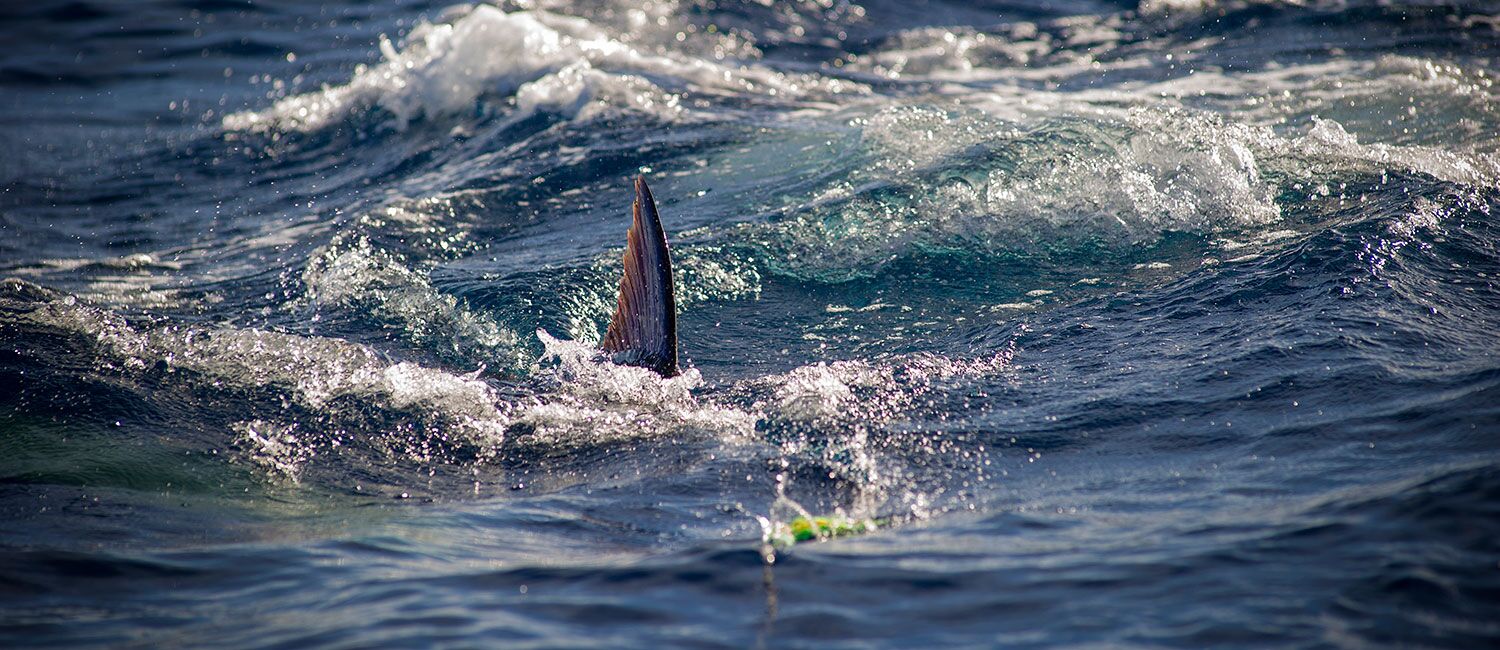 Whatever style of fishing you prefer – freshwater, estuary, inshore or offshore – there’s no better feeling than being on the water.
Whatever style of fishing you prefer – freshwater, estuary, inshore or offshore – there’s no better feeling than being on the water.
Whether it’s twitching surface lures for bass, casting soft plastic lures for big flathead, or trolling skirted lures for marlin… the strike, the battle and releasing the fish it is what it’s all about.
Becoming a successful angler is about learning. Always.
While you may have learnt so much over the years and worked hard to land that massive trophy fish, each time you go fishing you’re entering into a battle with nature – and you’re never guaranteed to catch fish.
Even the world’s most experienced anglers have days when they don’t catch fish.
All successful anglers continue to learn new lessons every time they’re on the water.
Whether heading offshore into the bluewater, or fishing freshwater lakes, it’s important to remember you don’t need to have the biggest boat or the fastest boat to tackle some of the world’s most prized sport fish.
The modern day trailer boat or small fishing boat is a serious weapon that’s capable of tackling even the largest of fish.
In fact: One of the biggest, all-tackle record blue marlin in Australia was caught on a trailer boat, not a 40-footer.
While a large game boat may offer more space and comfort for long days offshore chasing game fish, it’s not cheap to run.
Similarly, having the fastest bass boat on the water doesn’t necessarily mean you’ll catch more fish.
Small fishing boats or trailer boats are much cheaper to operate, can be run with less crew, and are much easier to tow, launch and retrieve.
To find out how to catch more fish from smaller boats, we got in touch with 60 fishing pros and experts from around the world including Steve Starling, Adam Royter, Lee Rayner, Ryan Moody, Jim Rizzuto, Buzz Ramsey, Jason Christie, Tom Redington, Captain Bouncer Smith, Al Lindner and Charlie Moore (to name just a few) and asked each one:
What are your three best tips to catch more fish from a trailer boat or small fishing boat?
This is the largest expert round-up ever undertaken in the recreational fishing industry, which gathers the best tips on how to catch both small and big fish from a smaller boat.
There’s a lot of valuable information in the responses we received from top anglers all over the world.
So, whether you’re looking for small boat fishing tips to help you catch more fish in saltwater or freshwater, or you simply want to become a better all-round angler, here are all 60 of their responses to help you keep learning about catching sport fish out of a small fishing boat.
Note: We contacted experts covering the breadth of the fishing industry. Responses cover everything from catching bass and trout, to tuna and marlin and other pelagic species – and from trolling livebaits, to casting lures, to fly fishing.
![]()
“Always troll at least one lure or bait on a short line, right in the prop wash”
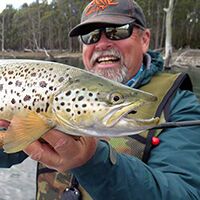
Steve Starling
One of Australia’s best-known and most prolific fishing writers and media personalities. He’s published over 20 books and presented many television fishing shows.
1. Be organised and ready to roll at a moment’s notice.
Minimal prep time and ease of launching and retrieving your boat will encourage you to fish more often and to make ‘spur of the moment’ forays whenever conditions are optimum. You’ll catch a lot more fish as a result.
2. Your boat is your biggest, best and most attractive ‘teaser’.
When trolling, predatory fish are often attracted to the turbulent ‘white water’ created by your hull and outboard motor. Always troll at least one lure or bait on a really short line, right in the prop wash. You’ll be amazed how often this is the first line to draw a strike.
3. Action breeds action.
Bite periods are often short and intense so optimise your opportunities by attempting to turn single fish hook-ups into multiples whenever possible. When one fish is hooked, get another lure or bait in as soon as practical… and hang on.
“It’s important to have a boat that’s fit for purpose for the sport fish you want to target”
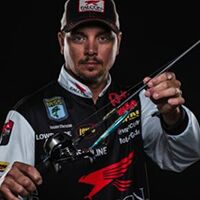
Jason Christie
Bassmaster Elite / Falcon Rods Pro. Two-time Elite Series champion and winner of two Bassmaster Opens events.
1. It’s important to have a boat that’s fit for purpose for the sport fish you want to target.
I fish for bass so I’ve a purpose-built bass boat – low-profile, stable, plenty of casting area and fitted with the latest Garmin marine electronics. My boat is fast so I can cover long distances quickly and it handles rough water really well. So I can take it pretty much anywhere. I love to fish shallow water, and it’d be difficult to do that with any other style of boat (such as a bay boat or offshore boat).
2. I keep my boat ridiculously organised.
Everything has its place. I carry everything I might need for any bass fishing situation and I know exactly where it is when I need it. I also carry a spare propeller, extra lifejacket and other items. To be successful in the elite bass fishing tournament scene, it’s important to never have to leave the water for anything. Think of everything you might need in any situation… and make sure it’s onboard your boat and you know where it is.
3. Even though you may have a boat that’ll get you anywhere, there’s no point driving around all day.
You actually have to stop and fish. Pick an area of lake or river that looks like it will hold fish and really work that section of water. Take the time to learn what the fish are doing, then when you start catching bass it’s likely that pattern will work for most of the area you’re fishing. There’s no point moving around every 30 minutes – you won’t catch fish by driving around… you must fish!
“Find an out-of-the way location that doesn’t get a lot of boat traffic”

Charlie Moore
Television host at Charlie Moore No Offense on NBCSports, Charlie Moore Outdoors on NES, and five times Emmy Winner. Head of THE MAD FISHERMAN.
First of all, fishing out of a small boat is one of my favorite ways to fish for smallmouth and largemouth bass. Here are a few of my tips to help you land more fish:
1. Do not pick a big body of water.
Find an out-of-the way location that doesn’t get a lot of boat traffic. That way you’re very safe in your small boat and you’re not dealing with ski boats or cigarette boats while you’re trying to fish from a small boat.
2. Picking the proper lure is also essential.
Do not bring a heavy tackle box with way too many lures. Most fisherman commonly make this mistake. Small spinnerbaits or inline spinners, a white Slug-Go or a top water hula popper are great baits for small pond fishing. The thing about fishing small ponds out of small boats is that access is limited to other bigger boats, therefore the fishing essentially should be better.
3. The most important tip is to limit the amount of rods and reels you bring.
Limit the amount of lures you bring and seek out cool and unique ponds that other fisherman may not have access to. The bottom line tip from the Mad Fisherman: make sure you have a shit-ton of fun!
“Turning off your fish finder whenever possible is always a good idea”
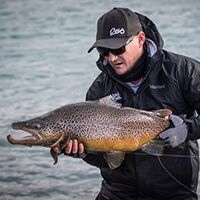
Adam Royter
Well-known fishing writer, rod builder, casting instructor, tackle designer and public speaker.
1. Power up.
If you’re a lure caster or fly angler, one of the most important tools you can own is an electric motor. Whether it’s a simple transom mount or a bow mount with all the bells and whistles, these engines are incredibly valuable. Having the ability to silently move and manoeuvre yourself around structure and onto the flats is key to catching more fish, Especially the spooky ones.
2. The ping.
Turning off your fish finder whenever possible is always a good idea. Not a lot of study has been done on what fish might interpret your fish finder to sound like but if you think about it, it’s a man-made pulse and I can’t really see how that fits into the daily lives of fish. Certainly keeping fish happy and comfortable under the boat is a good idea, so rather than blast them with a sound wave, I prefer to hit the off button whenever possible.
3. Play it cool.
Backing off your drag as the fish gets boat side might seem like the opposite thing to what you would want to do. The thing is, having a little less drag at this point can save you pulling hooks because of the reduced line stretch with a shorter length of line and also allows compensation for a missed netting or tailing from where the fish is likely to do the bolt. Keep in mind that you have fought the fish this far and it’s more tired now than at the start so the chances of it going a long way are reduced. At the end of the day, this works. Try it for yourself.
“Dedicate several days looking for schools of aggregated fish on a sounder... deep holes are a good place to start”
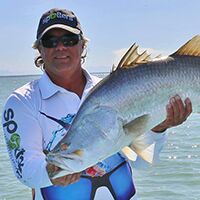
Ryan Moody
Barra fishing charter guide, product tester for various brands, ambassador for Garmin Marine and Evinrude. He’s also a writer for Queensland Fishing Monthly.
Most people assume fishing success is about finding that secret spot or using that special lure or bait. After putting clients onto 2000 metre-plus barra along with many other bucket list fish, it actually comes down to learning fish behaviour and what I call ‘fishing with strategy’.
So what does that mean?
Well, I prefer to target fish in areas they aggregate because they’re easier to catch when they’re all together. The trick, of course, is to work out why they aggregate in a particular area. You’ll then be able to predict when aggregation is going to occur.
Here are the three things I’ve done to work that out:
1. Dedicate several days looking for schools of aggregated fish on your sounder.
Deep holes are a good place to start.
2. Once you’ve found them, sit and observe what they are doing in the hole.
Are they rising up? Are they moving from one end to the other? Ideally, wait until they leave the hole and observe the potential triggers to that movement. Tidal run is a big one.
3. While waiting and observing, fish on them using various techniques.
Remember, at this stage it’s likely you don’t know what species they are… unless, of course, you drop a waterproof camera down or use Garmin CHIRP technology, which provides amazing detail. But don’t get too caught up on catching them (I know it’s hard) at this stage. It’s more important to work out what triggers their movement. Then go back the next day on a similar tide and see if the same thing happens. If it does, BINGO – you’ve learned something.
Establishing patterns and fishing with strategy is the basis of all my fishing success and the backbone of my online fishing courses Barra Basics, Threadfin Tactics and Wonky Holes.
“Most predatory species relate to one of three areas of change: a depth change, a change in cover, or a change in current”
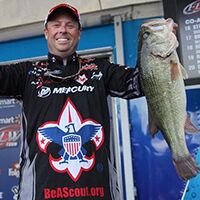
Tom Redington
Professional bass angler fishing the FLW Tour. Televison host of Big Bass Battle on NBC Sports & WFN. Fishing guide for trophy bass on Lake Fork, Texas.
Whether in freshwater or saltwater, most predatory fish species relate to one of three areas of change: a depth change, a change in cover, or a change in current. All of these changes are relative.
For example, a significant bottom drop-off from 4′ to 8′ in a shallow lake is a big depth change, whereas an underwater ledge that drops from 60′ to 100′ would be more likely to hold fish in a deep clear lake.
On a new body of water, start your search by keying on quick transition areas in depth, current, and/or cover and you’ll usually find the fish nearby.
“Fishing from a boat opens up the opportunity to troll, cast and retrieve, jig, fish bait suspended below a bobber, or (if you have an anchor) still fish”
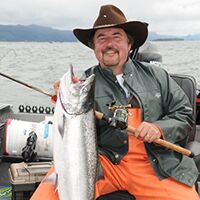
Buzz Ramsey
Columnist with Northwest Steelheader. Served as lure designer and field strategist for Yakima, Berkley and Luhr Jensen. He’s appeared on major television shows and in most major magazines. His many accomplishments include catching a 25lb steelhead and a massive 30lb steelhead, both of which spent some time as IGFA records. Inducted into the National Fresh Water Fishing Hall of Fame as a ‘Legendary Angler’ in 1995.
First, realize that my comments are referring to trout but may apply to other fish types too. In addition, these remarks are related to lakes or slow-moving rivers.
The first thing to decide is what fishing method to try. You have a choice here as fishing from a boat opens up the opportunity to troll, cast and retrieve, jig, fish bait suspended below a bobber, or (if you have an anchor) still fish.
Time of day is an important factor in determining where to find fish. Fish may be located near the surface or shore when the sun is low or when overcast and move deep when the sun is bright.
Likewise, water temperature is important as fish may be found near the surface, close to an entering tributary, or where the wind has pushed warm water when the main water body is cold. Likewise, fish may go deep to escape water temperatures unsuitable to them and the forage they’re after.
If you’re fishing new water, trolling might be the most productive as it allows you to learn the area and cover a lot of fish producing water.
Here’s where trolling a plug, like an extra-deep diving Mag Lip, might produce well. If you run across an especially productive area while trolling you may decide to stop and anchor or slow drift through the ‘hot spot’ and cast and retrieve a spinner, like a Rooster Tail.
While trolling will allow you to cover and find productive water, remember to not troll too fast. For example, the proper speed for trolling a small FlatFish, like an F-4 or F-5 size, is half-a-mile-per-hour (MPH).
The most productive trolling speed for a Mag Lip or Rooster Tail spinner ranges from 1 to 1-1/2 MPH. If you troll a spinner, remember to place a quality barrel-swivel a few feet up the line. This is important as a spinner will twist your line unless you install a swivel to remove it.
Try tipping the trailing hook of your plug, spinner or spoon with a scent-filled product like PowerBait or Gulp. What’s worked for me is to tip the trailing hook with a 1/4 inch section from a worm or grub shape.
White seems to always be the best color for plugs with dark red or black being my favorites when tipping a Rooster Tail. We’ve turned slow fishing into limits by tipping our lures.
Remember to stay safe. This not only means to follow the safety rules issued by the state, but go the extra mile by wearing an inflatable life jacket. They’re so comfortable you won’t even know you’re wearing one.
“Get the best sounder you can afford, particularly for water over 300 metres”
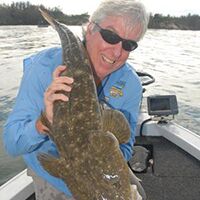
David Green
Australian fishing industry stalwart and magazine contributor/writer.
1. Get your rod holders set up properly to troll a spread and get the angles right.
I use drop-in insert pipes so my short lines troll in clear water wide of the prop wash. My boat actually has 34 rod holders, both racks and mounts. This means rods are always in the right position, even drifting wind against current. You can’t have enough of them.
2. Centre consoles are by far the most practical design.
For casting, trolling and bottom fishing I find centre console boats are most practical, but they need to be well designed so you get clear access all around the boat.
3. Get the best sounder you can afford, particularly for water over 300 metres.
You need at least 1 kW power if fishing offshore.
“Research spots on Google earth. You can find hidden gems”
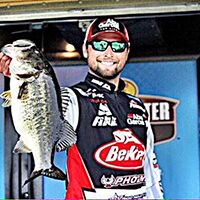
Justin Lucas
Professional bass angler on the Bassmaster Elite Series.
1. Slowing down.
Using Berkley Powerbait plastic worms.
2. Research spots on Google earth.
You can find hidden gems this way.
3. Use versatile rods and reels.
So you can throw several baits on one or two rods.
“Fish are constantly on the move so you must continually be on the hunt”
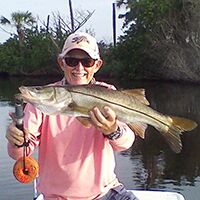
Kent Gibbens
Fly fishing instructor and Orvis Endorsed Guide at Back Country Charters.
In the area where I fish it’s mostly shore line fishing.
I’ve always said ‘he who pounds the most shoreline wins’.
Fish are constantly on the move so you must continually be on the hunt.
“Hot fishing spots develop on a daily basis and you have to be able to take advantage of it at the drop of a hat”
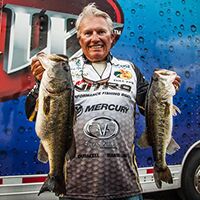
Roland Martin
Professional Bassmaster career sport fisherman. Host of Fishing with Roland Martin on NBCSN, and the first professional bass angler to be inducted into all three Halls of Fame (IGFA Hall of Fame, Freshwater Fishing Hall of Fame, Professional Bass Fishing Hall of Fame).
The biggest advantage to a trailered boat is the fact hot fishing spots develop on a daily basis and you have to be able to take advantage of it at the drop of a hat.
As a tournament bass fisherman, we have to trailer to a different venues on a weekly basis so I keep my boat ready at all times with gas, tire pressure checks and wheel bearing grease.
As a salt-water fisherman, I keep a flats skiff for tarpon, snook and redfish ready to go as well as a larger 28-footer, which I use offshore for sailfish, dolphin and grouper.
No matter what, where or when, I’m ready for any fishing with one of my trailered boats.
“Down size your gear and tackle if you’re fishing in clear water”
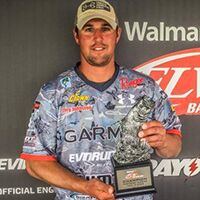
Cory Johnston
US Pro Bass tournament angler.
1. If you’re out in a small fishing boat get yourself an all-in-one Garmin sonar unit.
So you know how deep you’re fishing as well as what’s on the bottom. It’s really going to help you pinpoint the fish better.
2. Downsize your gear and tackle if you’re fishing in clear water.
You’re going to get a lot more bites to make for a fun day on the water.
3. Make sure you’re having fun when you’re on the water.
When you’re enjoying the day, you’re going to stay out on the water longer therefore you’re going to catch more fish.
“Learn about the range, strength and weaknesses of your boat and its capabilities”
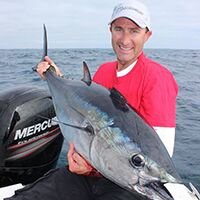
Lee Rayner
Fishing writer for various magazines, television presenter, and tackle store owner.
1. Get as much information as you can about a location or species you plan to target.
These days it’s much easier to get information through various avenues such as social media, etc. From this point, it makes it much easier to target a species and focus on learning all you can about the best time, place and methods to catch the fish.
2. Get the most out of your boat – it doesn’t matter if it’s a 12ft tinny or a $200k full bells and whistles trailerable game fishing rig.
Learn how to drive the boat and use it to its best ability. Learn about the range of your boat and its capabilities – strengths and weaknesses, and most of all learn how to use your marine electronics to get the best out of them. It amazes me that a lot of anglers have thousands of dollars of the best electronics marine money can buy, but if you can’t use it then it’s useless! I’ve seen plenty of guys with small units and little transducers catch awesome fish on a regular basis as they know how to read their sounder and interpret what it’s saying.
3. Always be fishing for that fish of a lifetime.
Make every knot and rig count. If a hook ‘should be sharp enough’ it’s not, so put on a new one. If the leader is a bit scuffed, then change it. It’s the little things that make the difference. Saying all that, a mistake can only make you a better angler, especially if you make the changes to stop it happening again.
“Drive to the fish. It’s quicker, more fun and safer”
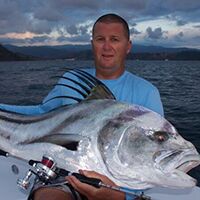
Tony Orton
Fishing charter guide at Offshore Fishing Adventures, one of New Zealand’s premier fishing charter companies. Fully-certified captain and marine engineer.
1. Be organised.
Limited space and crew means you really need to be organised to make the most of any opportunities. Have pre-rigged live bait rigs, bait catching gear, assist hooks, and leaders, etc, ready to go makes a huge difference. When we run to the fishing grounds we always have a live bait already rigged in the tank just in case we see a tailer or a bust up. It only takes one opportunity to catch the fish of a lifetime and being organised will sure put the odds in your favour.
2. Keep it simple.
I’ve seen too many crews over complicate a lure spread with way too many lures (maybe thinking their trailerboat is a 50ft launch). Our marlin spread is pretty simple: two teasers and three lures. The big teaser and dredge add a huge impact to the spread and when we hook up, we have just two lures to clear. More gear doesn’t mean more bites. A smaller number of lures placed in the right spots is going to get more aggressive bites.
3. Drive to the fish.
We always drive to the fish – it’s quicker, more fun and safer. Trailerboats aren’t designed to go backwards very well. It’s much more efficient to go into a turn early when hooked up, clear just the critical lures/teasers and go straight into chasing the fish. I’ve seen way too many crews keep running in a straight line and wait to clear all the gear, loose 500-700m of line and then start backing up the line.
“Have your trailerboat set up so you can fight the fish with the line perpendicular to the side your steering wheel is on”

Jim Rizzuto
He’s written about Hawaiin fishing since 1964. Author of The Kona Fishing Chronicles series, Modern Hawaiian Gamefishing and the three-volume Fishing Hawaii Style series. Weekly columnist for the Kona newspaper West Hawaii Today, and monthly columnist for Hawaii Fishing News. Fishing writer for magazines such as BlueWater Boats and Sportsfishing, Field and Stream, Salt Water Sportsman, Sport Fishing, Marlin, Western Outdoors, Fishing World, Sport Fishing, New Zealand Fishing News, Modern Fishing (Australia) and Pescare Mare (Italy), among others. He’s also a Member of the Board of Governors of the Hawaiian International Billfish Association.
On the world-famous Kona fishing grounds, trailerboats compete with million-dollar sportfishers to catch marlin, tuna, wahoo, mahi mahi and other big game fish. Eighteen-foot outboard skiffs have pulled in 1000lb marlin and regularly catch 200lb yellowfin tuna.
1. Trailerboats use lure-trolling methods popular with anglers on boats of all sizes.
Some Kona-style trolling lures are just as effective on trailerboats as on 40-50ft sporfisher, but the success rate can vary because of the size of the wake and the sound of the engines. (Trailerboats have a narrow wake determined by highway driving laws.) When in doubt, start with proven big-boat lures, but be prepared to share success stories with other small-boaters and experiment with lures that may turn out to be small-boat specials.
Pulling a full spread of five lures can result in a lot of tangles. Use outriggers to lift the longest lines and use deck-level release clips to bring your short lines down to water level. Don’t be surprised if your five-spot position is your most successful. Imagine the position of the five spots on a die. The five-spot position is the one in the middle. On a trailerboat, the lure running in that spot is usually dodging in and out of the end of the white water commotion kicked up by the engines and its leader is hidden by the white water plume.
2. Also consider using live baits.
Know where and how to catch live baits, how to keep them alive, and how to rig and fish them. Live-baiting gives you a more comfortable ride, saves a lot of fuel money and provides a quieter and more relaxing fishing day between bites. Trailerboats purpose built for offshore fishing will have a live bait built in as standard. Collapsible canvas live bait tanks also work great on smaller boats, using a saltwater washdown hose powered by a bilge pump.
3. When fighting a big fish, a trailerboat has a special advantage over a bigger, heavier offshore monster craft.
Have your trailerboat set up so you can fight the fish with the line perpendicular to the side your steering wheel is on. When a big fish runs, position your boat sideways so the fish has to pull the boat sideways. By ‘T-boning’ the fish in this way, the skipper can easily maneuver the boat forward or back to maintain control over the fish as it tires itself dragging the boat sideways. Recently, a pair of fishermen in a 19-footer beat a 1065lb blue marlin in a four-hour fight!
“Bow-mount electric motor, the number one essential tool for positioning and controlling your boat”
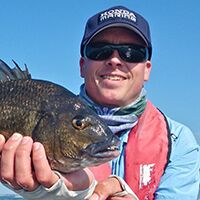
Steve Gill
Bream tournament angler.
When targeting bream on lures from trailer boats there are a number of ‘must haves’ that will increase your chances of luring numbers of fish:
1. Bow-mounted electric motor.
The number one essential tool for positioning and controlling your boat while fishing. You just can’t get serious without one.
2. Fish finder and GPS unit.
The benefits of a quality sonar/chartplotter unit are enormous, from actually picking out the size of fish to target on your screen through to observing contour lines, drop offs, and bait schools. Garmin’s CHIRP sonar technology really delivers near photo-quality images of the world beneath the surface.
3. Polarised sunglasses.
For shallow water sight casting on flats or in snags and oyster racks, a quality pair of polarised sunglasses is essential. You’ll see the fish you’re targeting with ease, which enables you to plan your presentation more effectively and hopefully not spook the fish.
“The most important thing is to make sure everything is well maintained. You don’t want any mechanical breakdowns while you’re out on the water”
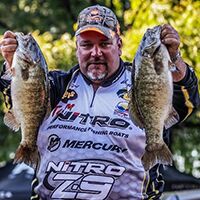
Peter Larmand
Tournament angler, radio show host and producer, and fishing guide in Eastern Ontario. He runs an annual Kids Fishing Tournament every spring.
Fishing from a small boat is how most professional anglers started out and began honing their skills. Some of the best fishing I’ve ever had was from a 12ft aluminum boat with a 9.9hp Mercury outboard on it. For those just getting into fishing out of a small boat, the three things that’ll help you be more successful out on the water are:
1. The most important thing is to make sure everything is well maintained.
You don’t want any mechanical breakdowns while you’re out on the lake or river. Breakdowns can occur, but keeping your outboard properly maintained is a good way to avoid problems down the road.
2. Limiting the amount of tackle you bring is important.
I normally bring no more than three rods with me in the boat and one tackle bag. I don’t have a lot of room on my boat, so I don’t want to crowd it with tackle. It’ll also avoid breaking a rod if you land a big fish.
3. Make sure you check the weather conditions where you’re going to be fishing.
You don’t want to take chances with weather when you’re out in a small boat. Regardless of the size the body of water, you always want to be safe.
“Buy the best electronics you can afford”
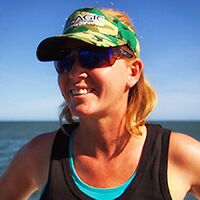
Kelly Dally-Fallon
Fishing blogger and owner of the Black Marlin Fishing Blog.
1. Preparation.
Pre-rig all your tackle so it’s ready to go. So if you’re marlin fishing, pre-rig all your baits in advance. Small boats are more subject to conditions and sometimes it’s just not possible to rig on the go.
2. Make sure everything on your boat is in good working order including your tackle.
Have a plan for the day and buy the best electronics you can afford. Make sure they’re set up correctly and that includes making sure your transducers are able to mark at cruising speed. Learn how to use them to get the best out of them.
3. Have your boat organised.
Everything you’ll be using and need for the day is at arm’s length (especially when fishing solo) and in its place. Keeping your boat tidy and clutter free is especially important to keep it safe and likewise washing blood and guts off straight away.
“Noise is everything when it comes to coaxing shy fish onto a hook”
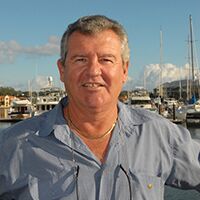
Rick Huckstepp
Barra fishing guide and writer/author, he’s also the current Australian fly rod record holder.
1. Trailer boat anglers who troll estuaries and water courses rather than drift and cast are well served by fitting their boat up with a tiller control on the engine.
The skipper on the tiller will find it so much easier to cut in and out, around, above and below structure showing on the depth sounder to give artificial lures the best chance of being in the right spot at the right time with less time spent battling a helm wheel.
2. Noise is everything when it comes to coaxing shy fish onto a hook.
Ask any diver what a boat sounds like running overhead. It’s deafening! If you can quieten your fishing methods with the use of an electric trolling motor you’re well on your way to catching more fish.
Ambient noise through the hull is also a ‘put-off’ for fish. Rubber mats on the deck, carpet on the hull sides and a liner in the anchor well to prevent metal on metal noise transmitting through the hull and into the water is a fish winner.
3. The use of a flexible rubber or plastic hose over the lower end of an anchor chain can greatly reduce noise when working the ground tackle.
Ideally in inshore situations where anchor safety and local laws won’t be compromised, no chain at all will have you fishing with more success. Use an anchor with a longer stock or a heavy weight on the eye end of the stock to keep the anchor lying at the correct altitude to the river or seabed, which is the purpose of the chain, when employed.
Sure, there are a million good ways to enhance your fishing successes, but if you can’t get these trailerboat basics sorted in the beginning it’ll be a constant battle against the tide.
“The number one thing in any sport fishing arsenal is a quality sounder”
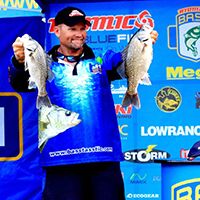
Matthew Mott
Bass tournament angler.
1. The number one thing in any sport fishing arsenal is electronics.
This includes electric motors, and the most important thing any person can have is a quality sounder. There’s one saying an old fella told me many years ago that I’ve always stuck by: “It doesn’t matter how big or how fast your boat goes, if you can’t see them and you can’t find them then you can’t catch them.”
Never a truer word has been spoken. I see many people who spend lots of money on a nice boat but forget about their marine electronics. This should be the first thing you put into your budget and work from there.
2. Lure selection.
Many people will catch fish on one sort of lure on a particular day and then will go and buy several of that exact lure, which might not work in a different weather conditions or water clarity. Not everyone can afford heaps of lures, but it’s essential to have as many different types, action and colours as you can.
3. As I do a lot of lure casting, a proper casting deck is an essential part of sport fishing.
It doesn’t matter whether you have a 10ft tinny or a 20ft bass boat, having some sort of stable casting platform is a must.
“Become a regular at your local tackle shop”
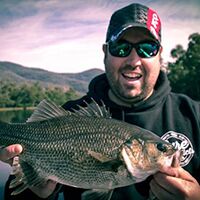
Tim McGoldrick
Fishing blogger, writer and content producer.
1. Do your research.
With the amount of information that’s freely available to everyone via the Internet, it’s the easiest way to get a head start on increasing your chances of catching the fish you want. From Google Maps looking at the most likely locations for good fishing grounds to using YouTube to learn new techniques, knots and gain other information. It’s been around long enough now, so there’s an overabundance of information out there on the Internet to get you catching quality and quantity in no time.
2. Invest in quality electronics.
Something I’ve heard and I like the analogy of is, would you rather fish in a hallway or a football field. By spending some money on quality sounders (fish finders), you’re able to narrow down the area you’re fishing by being able to see what’s going on below you.
With technology from the likes of Garmin – which offers CHIRP ClearVu, CHIRP SideVu, and Panoptix all-seeing sonar – you’re able to pinpoint likely fishing areas and even see the fish themselves – all around the boat. This will increase your fishing time and should increase your catch rate. But as with all technology, you need to learn how to use it, so go back to point 1 and jump on YouTube and learn from the professionals.
If you’re fishing by casting lures, definitely look at adding an electric bow mount electronic motor to your boat. I couldn’t be without my electric as it’s almost as essential to being successful as it is to using a rod and reel. A lot of my fishing is done in estuaries and some of the best places to catch fish are on the edges and in structure, such as fallen trees and rock ledges.
By using an electric motor, you’re able to run parallel to the bank and efficiently fish an area by placing cast after cast on and around the structure. They’re also great for moving around silently on the flats and at the push of a button you can change the depth of water you’re fishing to try to find where the fish are holding.
3. Become a regular at your local tackle shop.
These guys should be a bank of knowledge as they interact with local fishos day in and day out. They’ll be able to give you up-to-date info of what’s biting, where they’re biting and what to use. You’ll also meet other regular customers from time to time and if you get to know them well enough, some will even take you under their wing and show you first hand what they know by taking you out fishing.
I really like to road trip to new destinations with the boat in tow. So a personal rule of mine when travelling to new areas is to go to the local tackle shop and spend some money on some new tackle. I think the best way to get some knowledge of an unknown water way is to buy a handful of recommended lures that are seen as ‘must haves’ in the place you intend to fish, then ask the guys in the shop for some local knowledge and know-how. Most tackle shop owners and employees are happy to whip out a map and a pen and show you where you where to go and the fact you spent some money with them might get you better information.
“Make your terminal rigs in front of the TV instead of in front of a school of fish”
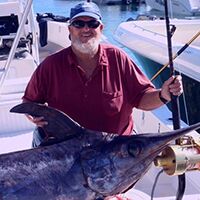
Capt. Bouncer
Capt. Bouncer Smith is widely regarded as one of the best recreational swordfish captains in the world. Based in South Florida, he currently averages more than 400 charters per year and is a master of many fishing techniques including kite fishing for sailfish, tarpon fishing and fly fishing.
1. Try to use tackle that matches probabilities of the fish species you will encounter.
Mahi mahi, sailfish, blackfin tuna and most other species are well matched to 20-30lb tackle. Much lighter tackle and fights become tenuous and multiple hooks become severely complicated. On the other hand, even blue marlin can be caught on 30lb tackle.
We use Penn lever drag Squall reels with 30lb Berkley ProSpec Chrome line for trolling , Penn International 16 reels for trolling and kite fishing, and Penn Clash 8000 reels for spinning tackle, both filled with 20lb Berkley ProSpec Chrome line.
2. Save hours.
Order live bait in advance and buy it from a reliable dealer. We buy bait every day. We save hours searching for and catching bait. We save a big piece of the cost of buying bait by not running around burning fuel to get to bait, and not buying so many bait rigs and chum.
3. Make your terminal rigs in front of the TV instead of in front of a school of fish.
Store each rig in a slide lock storage baggie. Remove the rig and shove the bag in your pocket. You can put them away to reuse after the blitz is over.
“Depth is key... if the fish are at 5m and you're using a 1m lure it will be a long day”
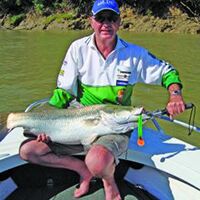
Wayne Lennon
Developer of Oar-Gee Lures – one of Australia’s best-known lure brands, manufacturing a range of lures to suit freshwater and saltwater fish species.
1. Boat speed is critical.
Not point A to B, but your trolling speed. All lures are not the same and each has been designed for a different species and purpose. Some lures can be trolled at a fast speed, for example, when fishing for pelagic species, while others are designed to troll slowly when trolling for Murray cod in rivers and dams.
How do you determine the right speed? Let the rod tell you. Assuming you have the required rod and reel for the target species, put your favourite lure out to the required distance from the boat and start trolling. If your rod is bent right over and not pulsing at the tip then you’re going too fast. If the rod is almost straight and not pulsing at the tip then you’re too slow. It needs to have a slight bend and the tip of the rod should be pulsing in time with the action of the lure.
Once this speed is achieved you can then adjust up or down to suit the conditions, such as wind and current.
2. Depth is the next key.
If the fish are at 5m and you’re using a 1m lure it will be a long day. If you don’t use a depth sounder, run a spread of lures at different depths until the fish are found. I caution when doing this though, as your speed will be a compromise as different depth lures will need different speeds.
3. Which lure?
As a general rule, long skinny lures with small bibs will troll faster and not as deep compared to a wide-bodied lure with a big bib. The Oar-Gee Oarsome 130mm lure with a 1m or 3m bib is used in Africa for tiger fish and trolled quickly, while the same lure with a 5m bib is used in Papua New Guinea trolling a lot slower for black bass. This same lure can then be trolled in the northern parts of Australia for barramundi. It all comes back to your trolling speed.
“Try different color lures, fish at different depths and go explore your favorite body of water”
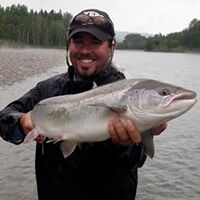
Jamie Pistilli
Professional fishing guide, outdoor writer, and television personality. Hosted a season of Big City Fishing, and he’s appeared as a guest on The New Fly Fisher and The Kayak Fishing Show with Jim Sammons and was featured on the award-winning DVD Kayak Fishing Game On. Featured in numerous fishing publications including the cover of Ontario Out Of Doors, he’s also a regional editor for Kayak Angler Magazine.
1. Persistance.
I grew up renting 14ft aluminum boats and had much success while on the water. The key is to be persistent. Go fishing!
2. Be on the water.
You can read every magazine or Internet article but the only way to improve is by being on the water. When you have success, note the conditions and really pay attention to the ‘why’. If you keep doing the same thing, you will get the same results.
3. Try different things.
Try different color lures, fish at different depths and go explore your favorite body of water. When the bite is hot, keep fishing and you may have the best day of your life.
“Having a good gimbal is key as most smaller boats don't have a game chair”
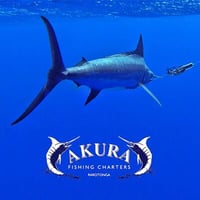
Capt. George
Capt. George of the Akura is a fishing charter guide based in Rarotonga, Cook Islands.
1. Gimbal/harness.
Having a good gimbal is key as most smaller boats don’t have a game chair. This will make pulling in the fish easier with less stress on the body.
2. Room to move.
It’s important to have good manoeuvrability/room to move around on the boat. Sometimes fish will go under the boat and around the engine, so being able to keep the line away from the boat and propeller is important.
3. Deep-V hull boat.
In Rarotonga we’re fishing in open ocean with no shelter from wind and waves. Having a boat with a deep-V hull will allow you to manoeuvre safely in rough seas and provide stability. Many times you’re fishing alone on smaller boats so being able to focus on fishing rather than constantly steering the boat is good.
“Understanding weather patterns, ocean currents and prevailing conditions not only will see you catch more fish, but will always get you home safely as well”
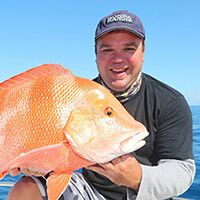
Jason Wilhelm
Recognised barramundi expert at the forefront of impoundment barra fishing techniques. With a strong background in saltwater barramundi and sportsfishing, his knowledge on the species is both highly regarded and respected. He’s often found doing information nights for clubs, tackle stores and various outdoor shows.
As an avid trailerboat fisherman for over 30 years, the three factors that are vital for success are:
1. Boat awareness and safety.
Having a well-kept, tidy rig will eliminate any worries or unwanted stress that’ll affect where and how you fish. The marine environment is the toughest on the planet and salt destroys everything if not properly maintained. This includes an up-to-date engine service schedule, trailer maintenance, batteries and electronics that are in good working order, a functioning compass, clean bilges and well-looked after steering components. It also includes well-maintained fishing gear, drags tested and set, lines, leaders, lures and terminal tackle.
Having all the correct safety equipment, and even having more than what legislation dictates is also important. Ensuring marine radios work is a must, logging on with the coast guard on departure and return must be done. I take that even further by carrying a satellite phone in case you’re out of range, have a radio malfunction or need emergency assistance.
Always have a redundancy in case everything goes south with your electronics. It might sound simple, but the above isn’t a given for many boat anglers. Be sure this isn’t you because then you can focus on catching fish.
2. Understanding weather patterns, ocean currents and prevailing conditions.
Not only will you catch more fish, you will always get you home safely as well. On the east coast of Australia the Eastern Australian Current (EAC) is the dominating oceanographic force that needs to be understood to gain the benefits of its full effect.
There are a vast array of websites and apps such as Fishtrack, Buoyweather and the like that detail the direction of current, water temperature, chlorophyll data, upwellings and convergence zones. This data is vital and is directly linked to my third recommendation.
3. Understand your quarry.
Whatever fish you target will have certain traits, likings and dislikes when it comes to the EAC. Researching the species you’re targeting will give you intimate knowledge of where you need to be and in what water to be in with a shot to being successful. This tip cannot be understated. It doesn’t matter what fish you target, understanding that species and it habits is absolutely pivotal to your success.
“Learn the barometric system for the area you fish”
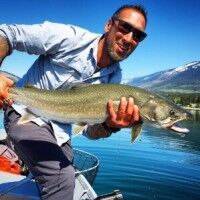
Chad Deschamps
Pro staff angler for Lyman Lures. Having fished since he was four years old, he’s currently learning about the effects hydroelectric power dams have on fish, that are in his backyard in Revelstoke, Canada.
1. Do your homework.
If you’re fishing a new body of water, or even familiar waters, topographic maps are a good way to expose hidden shoals, reefs, ledges, drop-offs that may help you navigate and position yourself where large structures harbour bait fish.
2. Weather is a huge factor.
‘Barometric pressure’ has a huge effect on fish. Learn the barometric system for the area you fish. ‘Stable to falling pressure’ are predominantly the best times.
3. Water temperature fish are comfortable in.
The key is knowing the species of fish you plan on fishing for. This includes their habits, what they feed on, and, most of all, the water temperature they prefer. This will bring your odds up quite considerably.
“Learn the limitations of your boat and associated equipment and make them work for you”
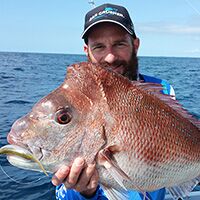
Nathan Bajada
Experienced game fishing tournament angler and proprietor of specialist marine electronics and sports fishing outfitter Barji Marine.
1. Chances are if you own a small boat it’s on a trailer.
Don’t be afraid to hook it up to your car and move to where the fish are. Pelagic fish such as marlin, tuna and sharks move with seasonal currents and changes in water temperature. Utilising a mix of online sea surface imagery and even reviewing social media can provide some accurate indication as to where the best place to be is. Having a small boat on a trailer provides you with the ultimate ability and flexibility to find fish.
2. Just because you have a small boat, doesn’t mean you can’t mix with the bigger boats.
With the advances in technology, more fuel-efficient engines and compact high-power marine electronics, you too can push out to the areas that in the past were only domains to the larger boat fleet. Learn the limitations of your boat and associated equipment and make them work for you.
3. Having a smaller boat does come with its limitations when it comes to available deck space.
That said, this doesn’t need to be a limitation. Ensure you fully utilise all the available space. Keep things you would use frequently within arm’s reach. This is the advantage of not having a large deck. Preparation is the key. Having a well-laid out workspace and deck can be the difference between success and failure during a hot bite.
“A good trolling motor and electronics make you a much better fisherman”
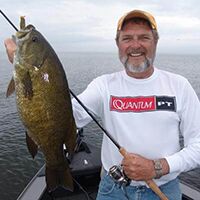
Al Lindner
Sportsman, television and radio personality, and fishing industry innovator who has invented many fishing lures and rigs including the Lindy Rig. Host of Lindner’s Angling Edge and Fishing Edge television series.
1. Small boats give you access to less pressured waters.
Look for areas off the beaten path and they’re usually awesome fisheries. Also, small boats are great for small rivers and they have some of the most overlooked opportunities in the country.
2. Just because it’s a small boat doesn’t mean you should skimp on equipment.
A good trolling motor and electronics make you a much better fisherman. There are a lot of great options that are cost effective to get your small boat rigged.
3. Figure out a way to launch and load your small rig on dry land.
I have a winch mounted on the trailer to pull it back on from a gravel road and I use 1.5″ PVC pipes to roll the boat across dry land to launch and load. Having a system like this will gain you access to water no one fishes and you’ll have the tools on board to be successful.
“Look after your gear. Also, watch the weather reports”
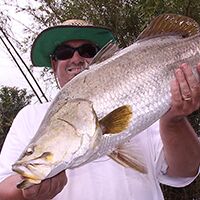
Matt Flynn
Fishing columnist at Sunday Territorian and publisher of North Australian Fish Finder.
1. Beer.
Find out where the local fishos drink and be there. Be sure to shout (Aussie lingo for buying a round of beers). Don’t offer advice. Shut up and listen. Act dumb. Some books and websites are great for information, but you’ll get the best advice from locals, and it’ll be current. You’ll also get spun some innocent and not so innocent bullshit, but that’s the game. You have to work your way through it.
2. Get out there.
Like anything, practice makes perfect. Again, books will help, but nothing beats experience. If you followed tip 1, it shouldn’t be long before you do ok on the water… and you need to do ok, because successive bad trips kill the spirit. Success breeds success.
3. Look after your gear.
Also watch the weather reports. Refer to tip 1 for finding out about local hazards. Keep your motor in good order and don’t take risks with the weather. You won’t catch much if you’re broken down or dead. Also, if you fish with your lady, leave her at home for exploratory trips. It’s best to do the rockbar smashing solo. Once you have a new area sussed, then take her.
“Look up old and recent fishing reports on the place you plan to fish”
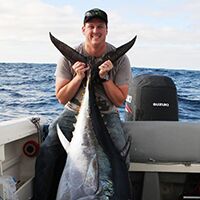
Daniel Kent
Fishing writer and JML Anglers Alliance Pro Staff.
1. Preparation.
By far the most important aspect of fishing from smaller fishing boats is being prepared for whatever situations might arise… everything from keeping a clean boat to knowing where everything is stored. Having the right rod and reel combos and terminal tackle to cover all situations. One minute you might be deep dropping live baits, the next you might need to be casting surface lures. Make sure you have all bases covered.
Obviously, the amount of gear you can take is limited on a smaller boat but if you plan to fish heavy, make sure you put in at least one lighter outfit and vice versa. Tie rigs the night before, talk to your crew about where the gaff/net is stored and make sure everyone knows what their roles are once the action starts.
Being prepared won’t only make your day on the water a more enjoyable one, it’ll also put more fish on the deck.
2. Research.
In this day and age of having all the information you need at the press of a few buttons, make sure you utilise it. Check wind and weather conditions. Look up tides and moon phases.
Know the area you’re fishing, study it on Google Earth or better still, depth finder charts. Look up old and recent fishing reports on the place you plan to fish, ring the local tackle store, ask at the ramp. Those who do the most research catch the most fish.
3. Time on the water.
When everything’s said and done, nothing puts more fish in the boat than good old-fashioned time on the water. The more time you spend doing something, the better you get at it.
The longer time you’re on the high seas the more experiences you will encounter and the more knowledgeable you’ll become.
Go fishing as often as you can, ask questions and observe.
“Make sure your boat and electronics are working 100%”
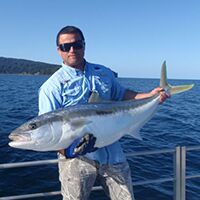
Ben Pokaia
Fishing charter guide, based in New Zealand.
1. My number one tip is preparation.
That is, making sure your boat is running 100%, live bait pumps are working and electronics are working 100%.
2. Have a game plan.
Species targeted, locations decided, tides, bites times, etc, all combined and sticking to your plan is crucial. Don’t be tempted to sidetrack.
3. Fishing tackle, reels serviced, rods 100%, line, leader, hooks all 100%, and hooks sharp.
Gear failure is one of my biggest hates and you want to minimise this as much as possible. When you’re hooked-up to the fish of a lifetime you want everything in order to give you the best chance to land it.
It’s short and sweet, but I believe fishing is getting too over-complicated and things need to be simplified and the basics done well.
“Sharp hooks and good crimping. Set and check the drags every trip out. Place the lures in the water when setting the spread”
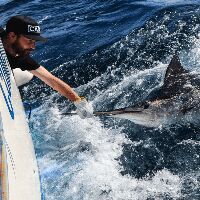
Jason Olivey
Australian east coast lure developer and manufacturer.
Without going into raptures about trolling lures and rigging or boat handling, I want to first say the best people to learn from are the hundreds of families that enjoy sport fishing with their local clubs… be it competition fishing or just social gatherings. The amount of information these old salts are willing to share is immense.
1. Learn how to run lures in the spread, positions and, in particular, colours.
There are five positions, but many small boats run three, and a teaser. Depends on the amount of crew and experience. Keep the lures in the deepest part of the pressure wave closer to the fish, not splashing on the tip of the wave. Lures, not surfboards.
My best tip is to watch the lures. Fish can pop up and disappear as quick as a flash. A turn of the boat can bring the lures up and get the strike. Go through who is on strike and what everyone is expected to do.
2. Don’t rush things.
Sharp hooks and good crimping. Set and check the drags every trip out. Place the lures in the water when setting the spread. Don’t rush things once you’ve hooked up and cleared the deck. Enjoy the moment. Never leave the lures on the floor or let them hit the boat on the way in. I cringe at that more than most. I know how much work goes into making a lure. Keep the hooks up or down in the skirts. Toothpick or rubber plug the lures. Quality gear costs a bit more but doesn’t cost you the fish of a lifetime.
3. Join a club.
I guess the best tip is go to a local game club. Take the family or a friend and get involved. The ocean is a big place and being where they’re biting and having the support and networking from a club will save you the frustration and heartache in the long run.
“We’re covering a larger area with a great variety of baits and different depths. That’s what a smaller outboard boat can offer over a bigger boat”
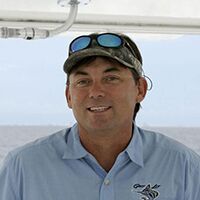
Capt. Ray Rosher
One of South Florida’s premier charter skippers, he’s a third generation Miami fisherman and has over 30 billfish fishing tournament victories.
I don’t trailer a boat but we own and charter a 26ft open fisherman called Miss Cheyenne.
The biggest advantage fishing on the smaller boat gives us is when we fly a kite or two kites on the downwind side of the boat and flat lines and deep lines on the upwind side of the boat.
Many days our Miss Cheyenne outfishes our other two inboard boats, both called Miss Britt, simply because we’re covering a larger area with a great variety of baits and different depths.
That’s what a smaller outboard boat can offer over a bigger boat.
“Knowing where certain lures are located in a box will reduce the time looking for them and give you more time fishing”
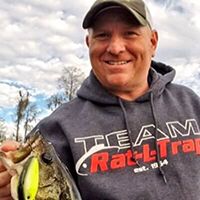
Jason Pittman
Retired professional tournament angler. Earned the title of Northshore Bass Angler of the Year.
1. Organization.
If you don’t have your tackle and gear together it can make for a long day. Knowing where certain lures are located in a box will reduce time looking for them and give you more time fishing. Remember that everything tackle-related should have a home.
2. Patience.
No matter what you’re doing in life, patience is a key element to success. Too many times you see anglers give up on a lure or a fishing spot way too soon. This is an extremely important aspect with youth or inexperienced anglers in the boat.
3. Keep it simple.
Don’t overthink the situation. The biggest mistake I’ve seen over the years is anglers trying to duplicate the way another angler told them they were catching them. If more anglers would fish to their strengths and not listen to the dock talk that gets into their heads or try to catch fish in a way they aren’t confident in, things would be simpler on the water.
Bottom line is keeping things organized and simple with a little patience on the water will make for a successful trip time after time.
“Trolling outside the reef, use small skirted lures or jet heads which create a smoke trail to attract the fish”
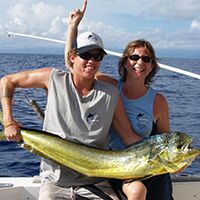
Soraya May-Malagi
Director of operations at Levasa Resort.
The best thing about fishing in a small boat in Samoa is you’re in the middle of the South Pacific, the centre of the Pacific Ocean, the largest ocean in the world, where the fish species are abundant. Use local knowledge for the type of species you wish to target and for your choice of fishing equipment: jigging, popping, trolling and bottom fishing.
Inside the lagoon: use light gear 16-20 lb line, silver spoons with one hook is great for GT or blue trevally.
Trolling outside the reef: light weight lines, use small skirted lures or jet heads, which create a smoke trail to attract the fish. Cast out to the back of the reef or the base of the lava cliff using a spin rod reel with 80lb braid line and poppers.
Bottom fishing: use sinkers and hooks to bait around bombies and broken ground or jigging use a spin rod reel with 80lb braid line with jigs.
“Make sure you have plenty of oil, fuel, and tools”
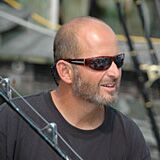
Capt. Sacco
Capt. Damon Sacco is the founder of Castafari Inc., a sport fishing enterprise offering fishing tournaments, seminar series, and private corporate fishing adventures. Castafari offshore adventures have been featured on ESPN, National Geographic, Spike, Versus, CNN, ABC, CBS, The Scarborough Show, and the Today Show.
1. Research.
Do your homework and research on where the fish are and what they’re eating before you launch the boat.
2. Be prepared.
Make sure you have plenty of oil, fuel, and tools on board to prevent mechanical failure which can happen.
3. Think.
Try fishing in spots away from the pack by thinking outside the box. Find areas with similar environments and less boats.
“If you want to catch good fish you have to work for them”
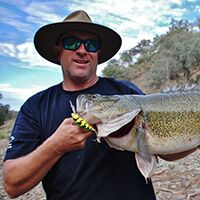
Jim Harnwell
After 20 years as editor/publisher of Fishing World, he’s currently the recreational fisheries manager with NSW DPI Fisheries.
1. Put in the hard yards.
Most of the really good anglers I know fish really hard. They never give up. The best of the best always put long hours in, often in conditions which see less-dedicated fishers pack up and go home. These hardcore few are rewarded by the effort they put in. Other fishos see the quality fish these top anglers catch and think they are just lucky. Luck has nothing to do with it – it’s all about hard work and perseverance. The take-home message here is if you want to catch good fish you have to work for them.
2. Do the miles.
While it’s true good fishing can be experienced just a few minutes from the boat ramp, I prefer to put in the miles and get away from the crowds. Key species like bream, mulloway and snapper don’t like boat noise and you’ll almost certainly catch more of these fish in more remote waters. Plus, it’s good to experience the peace and quiet that comes with fishing where other people aren’t!
3. Be prepared.
I like to spend time before a fishing trip sorting my gear, preparing leaders and organising outfits. This way I can arrive at my chosen location ready to fish. I often have a couple of similar outfits rigged and ready to go. If I get busted-up by a fish, I don’t have to waste time re-rigging – I just grab another rod and make another cast. You need to make the most of the opportunities when fish are biting so being prepared can mean the difference a good session and a red hot session!
“There's no reason you can't have ‘big boat’ electronic equipment on a small boat”
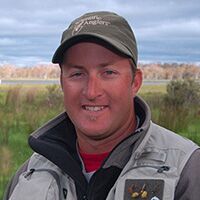
Micah Adams
One of Australia’s cutting-edge anglers, he’s had a large number of articles published at a national level over the past 15 years. He’s also been a professional fishing guide for more than a decade and hosted several instructional DVDs. His specialty is fly fishing, and he’s also experienced in other methods, such as lure casting and soft plastic fishing.
1. Keep your deck space tidy with everything you need cleverly stored or readily accessible.
Catching big fish from small boats requires anglers and crew that can think and move quickly around a small space so it needs to be tidy.
2. There’s no reason you can’t have ‘big boat’ electronic equipment on a small boat.
So equip yourself with the best gear you can to find more fish.
3. Eyes are the best tool any angler has.
Make sure everyone on board is always looking for signs of not only fish, but other smaller details like the distant bird, seal or suspect water movement. Even delegate a zone for crew to spend more time looking at so everyone on board isn’t looking at the same area.
“Never leave fish to find fish”
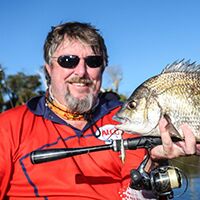
Scott Coghlan
Renowned sports journalist, fishing columnist and editor at Western Angler – Western Australia’s longest-running fishing magazine.
It’s an old fishing saying, but it rings true that the grass isn’t always greener at another location. If you’re catching good fish, don’t outsmart yourself by thinking you can do even better in a different location or you might be bitterly disappointed.
1. Bring the fish to you.
One of the easiest ways to ensure success is to bring the fish to you with the judicious use of berley. Find a likely location and start a berley trail, being careful not to give the fish too much to eat, lest they should ignore your offerings. Many species will come from a long way away when they smell berley in the water.
2. Use your eyes
Looks for any signs of fish activity. This could be splashes on the surface or even flashes in the water from fish passing by. If you’re lucky you might even be able to see fish in the water around you, or a dark shape that’s a school of fish.
3. Birds are your eyes on the ocean too.
They have a much better view of what’s going on in the water and you should always be looking for working birds.
“Local knowledge and time spent on the water is the key to success”
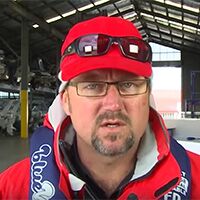
Kevin Smith
One of Australia’s most experienced boat testers/writers.
1. Local knowledge and time spent on the water is the key to success.
There are so many variables like time of the day, season, tides, moon phases, sunny, overcast conditions, winds, and of course, temperature of water is a big one. At least you can use one or all these as an excuse if you don’t catch any fish. If you don’t have local knowledge, get out with someone that does and steal with your eyes.
2. Troll fast.
For general game fish, my personal preference is trolling 1-3m diver bibbed lures as fast as I can without them jumping out the water. Some fine tuning to get them to swim straight is imperative.
3. Fresh is best.
For bait fishing, there’s nothing better than freshly caught local bait. Match the hatch if you can and target fish you can see on your sounder.
“If you can legally cast out a floating lure and secure the rod in a holder while you cast with another rod, do it”

Robin Follete
Writer and bass angler.
1. Study maps and fish surveys before you leave.
Small boats can get into places the big boats won’t fit. Concentrate on areas that aren’t being heavily fished.
2. Make the most of your time by being able to move easily.
Rid the boat of things that’ll distract you or be in your way. Take only the gear you need with a few extras for backup to conserve space. One net is enough. A small tackle box with room for lures and a few swivels, leaders and other items you might need are plenty.
3. Maximize your rods.
If you can legally cast out a floating lure and secure the rod in a holder while you cast with another rod, do it. Work around the floating lure so you can easily keep an eye on it as you cast.
“Spend your time fishing, not running 20 miles upriver looking for good fishing grounds”
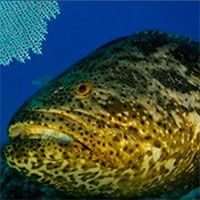
John Horner
Author of FishinTopsail.com, a blog featuring fishing reports from Surf City, NC and Topsail Island.
1. Don’t overlook any fishing spot.
I’ve caught nice fish in the smallest farm pond. Water covered with vegetation is perfect for a small boat. You couldn’t run an outboard, but you can use a push pole or a paddle to get to great spots that you couldn’t get to with a large boat.
2. Spend your time fishing.
Not running 20 miles upriver looking for good fishing grounds. Start fishing as soon as your butt hits the seat. If you’re launching from a boat ramp, fish the dock. Even the ramp can hold largemouth bass.
3. Time is precious.
Every minute of every day is a gift from God. You can’t buy time, trade for time, or steal time. Most of your time will be used to take care of your family. Going to work, sleeping, taking care of your home, and helping your family will take up most of your time. What’s left is your free time.
Free time is fishing time. So let’s make the best of our time. After a long day at work, there’s still several hours left and we want to go fishing.
There are two options, which option would you choose?
Option number one:
Back the truck to the boat and trailer, (it’s new and she’s a beauty). Attach the trailer to the tow bar, attach the trailer lights to the pigtail on the truck, and check the lights. Are the lights working? Check the tire pressure on the trailer tires. Don’t want to have a flat tire on your way to the lake. Load your fishing gear in the truck and drive to the lake.
Where you have to launch the boat, tie the boat to the dock. You don’t want your new fishing boat to float away. Go park the truck and when you’re finally in your boat, start the engine. Oh no, the motor won’t start, or the water pump isn’t pumping. Oh yeah, you didn’t forget the plug did you?
Ok, the boat is running and you head up river to your favorite fishing hole. Finally, bait is in the water, and you can relax, and catch that big bass you’ve been hunting for years. Nice day on the water.
Option number two:
Slide the jonboat into the back of the truck. Throw in the fishing gear, the trolling motor battery, and the trolling motor. Ok, time drive to the lake.
When we’re there, back the truck up to the water, and slide the jonboat into the water, park the truck, and walk to your waiting boat. Engage the trolling motor, steer a few feet from shore, and get the bait into the water. There could be a 10-pounder right there under the dock, taking a break from trolling the banks for supper.
Would you choose option two?
After a long day at work, I think I would.
“Always make sure the point of your hook is still sharp after snagging”
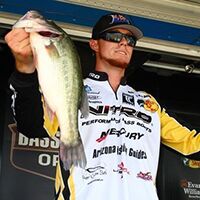
Josh Bertrand
Professional bass angler at Bassmaster Elite Series, and national fishing writer and media identity. He was 2012 Bassmaster Central Open Tour Angler of The Year.
1. Fish with a lure you’re confident in.
My favorite confidence lure is a Berkley Chigger Craw soft plastic bait.
2. Pay attention to the environment around you.
Watch for signs such as birds, which may tip you off on the location of the fish.
3. Pay attention to your hooks.
Always make sure the point of your hook is still sharp after snagging or bumping against a hard object such as a rock.
“Know your seasonal patterns”
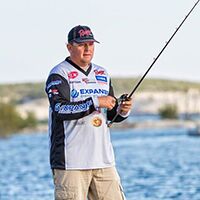
Kurt Dove
Full-time bass guide on Lake Amistad and national tournament angler.
1. Know your seasonal patterns.
Understanding the locations of fish based on their seasonal patterns will put you in position to have more success.
2. Use techniques you have confidence in catching fish.
Yes, there are many techniques that can be used to catch fish but excelling in just a few and fully understanding them will provide you with the ability to make them work in many types of conditions and times of year.
3. Understand boat positioning.
Be sure to position your boat so you can best target the fish and keep your lure or fishing technique in the strike zone for the longest period of time. This should assist to catching more fish once they’re located.
“Focus your efforts and current fish location knowledge on tidal changes”
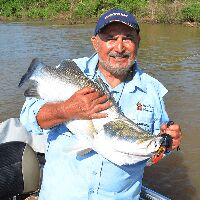
Alex Julius
One of Australia’s longest-serving fishing and outdoors writers, former fishing presenter at Wide World of Sports, and publisher of NAFA (National Australian Fishing Annual). He’s also the former operator of the multi-award-winning Arnhemland Barramundi Nature Lodge.
1. Fish where the bait is.
Whether you’re chasing barra in the rivers or bluewater pelagics, if you’re fishing where the food your target fish likes to eat is clearly present – visually or electronically (on your sounder) – you’re in with a chance.
2. Focus your efforts and current fish location knowledge on tidal changes.
That is, be where you know there are fish when the tide turns. If they’re going to bite at all, it’s likely it will be on the tide change.
3. Match the hatch, especially when you know there are fish there but they won’t bite.
If you can replicate the size, colour and action/depth of the bait your target species is eating, you’ve surely increased your chances.
“To help get more fish in the boat, know how to use and read your electronics. They’re the eyes under your boat”
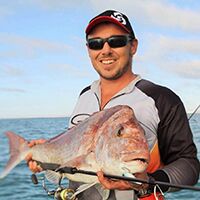
Brad Corrie
Owner of several fishing social media pages, he’s an ambassador for Garmin Marine, and a Frogleys Offshore pro angler.
1. Know how to use marine electronics.
Marine electronics are the eyes under your boat: your sounder tells you things that could be vital to landing more fish. When tuned and read correctly you should be able to tell what sort of ground you’re sitting on: mud, sand, weed, natural reef, natural structure or manmade structure. It will also tell you what area of the water column the fish are sitting or feeding helping you determine what fish are under the boat.
Depending on what sonar you run, technology like Garmin Panoptix also gives you live sonar, which provides the ability to see how the fish are reacting to your baits or lure, how predatory fish are feeding among bait balls, and where fish are sitting around structure right before your eyes – live on your head unit.
Fine tuning your unit manually and not leaving it on automatic setting also allows you to tune it to the situation you are in. Shallow settings are completely different from deep water settings. Freshwater settings are different from saltwater settings. Head out on the water, play with your sounder and settings and learn to do this every time you go out until you have it all set up for what situation you’re in.
2. Fresh, local baits.
This is a must for bait fishing. There’s no point rocking up to an area where the fish are feeding on live baits such as pilchards and sardines and throwing out a cockle (pippi) bait. You need to study the area you’re going to target and know what inhabits that area. Once you work that out spend the time collecting and preserving baits to keep them in tip-top condition. I recommend a vacuum sealer, which can be bought very cheaply online these days.
Fresh bait or live bait is the key. Dried-out, off-colour baits may work here and there, but if there are two of you on the boat, one person fishing fresh local bait and the other using freezer burnt, off-coloured, dried-out baits that have been jammed in your freezer or the tackle shops freezer for months, I know who I would put my money on to catch the majority of fish.
3. Hook selection.
The importance of careful hook selection can’t be underestimated. I’m not only talking about bait fishing, but lure fishing too. Hook selection is critical for matching bait size, lure size and fish species targeted and can turn a bad day on the water into a good day.
Being a South Australian fisherman a lot of my fishing is focused on bait fishing with a recent introduction to lure and soft plastic fishing over the past few years. Over my fishing life I’ve always been very careful to match up my hooks with the baits I use and the fish I’m targeting. I’ve learned this the hard way by losing some amazing fish. I guess it’s like rocking up to a dinner party to eat a T-bone and someone giving you a pitch fork to eat it with… it just doesn’t work.
We all plan our fishing trips, so also plan what baits you’re going to be using or collecting and buy hooks to suit. If you go too small in size, the hook will be lost in the bait and you’ll have less chance of sinking the hook point into the fish’s mouth. If you go too big, the bait will not look natural and the fish won’t go anywhere near what you’ve presented.
“Water temp, wind, and seasonal patterns will give you an idea of where the fish should be holding”
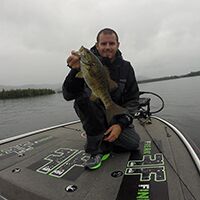
Matt Razey
Tournament bass angler throughout New England. Contributor and member of Freak Finder Fishing.
1. Pay attention to weather and weather patterns leading up to your fishing trip.
Water temperature, wind, and seasonal patterns will give you an idea of where the fish should be holding so you can identify where to start: coves, points, flats, deep breaks, etc.
2. Invest in high-quality electronics.
These are your eyes underwater and can help tell you: what the bottom composition is like; depth changes; if any offshore structure exists, etc. There are a lot of times, especially during summer months, when I won’t even make a cast on an area unless I see activity on my electronics.
Now with side imaging, down imaging and other advancements in technology, marine electronics are the best they’ve ever been and one of the most important tools on my boat. It’s amazing the detail is as good as it is and that we can analyze the water so quickly with these tools at our fingertips.
3. Have confidence in what you’re doing.
Some of my best days on the water have been when driving to the lake I have a good feeling about the trip. When you have confidence you’re going to catch fish, things seem to work in your favor. This confidence is the hardest thing to keep when your day is going slow.
It’s so important to keep your head in the game and keep telling yourself: “Ok, they’re going to bite right here.”
It’s one of the hardest things to explain to people who don’t fish, but staying mentally sharp and maintaining a high level of confidence in your abilities and choices out on the water is the most important thing for a fisherman.
“Learn how to fight fish from a boat”
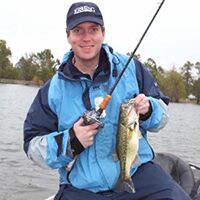
Scott Thomas
Editor at Fishing World – Australia’s premier fishing media brand, reaching more than 400,000 people each month.
1. Use the right boat for the job.
There are so many different types of boats and they all serve a purpose. Finding the correct one for your particular style of fishing will ensure it’s suitable for weather conditions and properly targeting the species of fish you’re chasing.
2. Learn how to best approach fish from a boat.
Many fish shy away from an approaching boat, so it’s important to understand what’s a suitable distance to keep between your boat and the fish. This goes for casting to bankside cover, approaching schooling fish, or even judging the distance of a trolled lure from your boat. Generally, the further away you are, the more chance you have of catching fish.
3. Learn how to fight fish from a boat.
Once hooked up, the driver of the boat can play an important role in landing the fish.
“Go at the right time of year for whatever you want to catch”
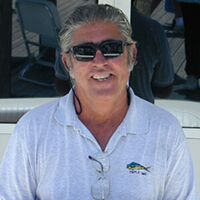
Capt. Joe Mercurio
Captain at Triple Time Charters, which specializes in offshore and deep sea sport fishing in the local waters of Key West and the Florida Keys.
Fish eat different in all parts of the world, so gain some local knowledge before you go.
Go at the right time of year for whatever you want to catch.
Have patience.
“As your fish gets closer to the boat, drop your entire rod and reel to your waist”
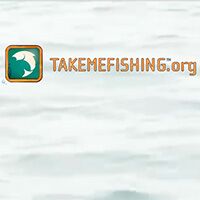
Take Me Fishing
A one-stop resource for everything fishing and boating, Take Me Fishing is the Recreational Boating & Fishing Foundation’s campaign to increase fishing and boating participation across the US.
1. Think about the areas you plan to fish.
When considering the ideal small fishing boat for you and your family, think about the areas you plan to fish, the species you prefer to catch, the number of passengers you will have on board, and where you intend to store the boat.
2. Identify the fishing situations and conditions where you’ll use your boat for the majority of your time.
Honesty is the best policy. Realistically identify the fishing situations and conditions where you’ll use your boat for the majority of your time. Evaluating how many people will regularly be on board will help determine length, beam, horsepower, and trailer type.
3. Identify water types that represent the bulk of your fishing.
If you’re fishing local water regularly then you’ll have an easier time picking a hull design. If you’re changing spots that range from small ponds to big lakes, and then you add in several ocean trips, you’ll find the jon boat that’s perfect in a small pond can be a liability in the ocean.
As your fish gets closer to the boat, drop your entire rod and reel to your waist. If the fish goes under the boat, get your rod tip in the water and follow it.
“Fish for what is available and what is biting”
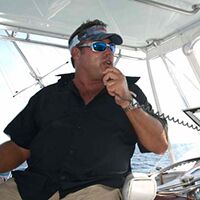
Capt. Chris Sheeder
Runs the charter boat Rum Line out of Casa Vieja Lodge, and has been fishing Guatemala for well over a decade. Released the 20,000th billfish of his career, a feat just two other captains have accomplished in the history of the sport.
1. Keep it simple.
Don’t over fish your boat. You don’t need to troll eight things to catch fish. Know your boat’s limitations and don’t exceed them.
2. Concentrate on catching your intended quarry.
Don’t try to catch a blue marlin for one hour and that doesn’t work, so you try for tuna for an hour, that doesn’t work, so you try to catch a wahoo for 30 minutes, that doesn’t work so you spearfish for 20 minutes.
3. Find out what is biting before you run off to wherever.
Fish for what is available and what is biting. It’s hard to be a hero even with a professional crew.
“When setting a plan to target particular species, think about where these fish like to live and travel most of the time”
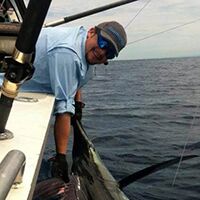
Johnno Meguerian
Game fishing tournament angler.
1. Research your target species.
When setting a plan to target particular species, think about where these fish like to live and travel. Do they spend most of the time over the shelf riding the ocean currents feeding? Do they spend their days schooling up bait over the inshore reef systems? Target the correct species in their domain because you need to be where the fish are.
2. Local knowledge.
Talk to other local fishermen and find out where the fish are. Do your best to predict where they’re next move is using sea surface charts. Always think about tidal flow in relation to underwater structure, whether it’s a reef drop-off/canyons. Most of these formations create eddies and these all play a major part in how bait fish react in any particular area. Find the food source, find the fish. Gaining local knowledge of the area and what’s been happening is a major key to this.
3. Take into account weather conditions when fishing from a small boat.
It’s not going to help you punching into swell and gusting winds all day to arrive at your fishing grounds and not being able to fish the area because you can’t keep your lures in the water. Sometimes it’s better to plan your day around the weather, which will enable you to make the most of your time on the water.
Remember, a trailer boat is just that… you can hitch it up and follow the fish up and down the coast. This will give you more time in the bite zone.
“Get to know every square millimetre of your local estuary”
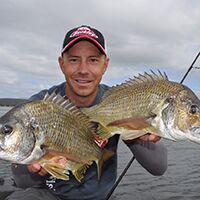
Brent Hodges
Fishing writer.
Big, wily old bream don’t give themselves up easily. Though there’s an element of luck involved in all fishing disciplines, consistency is generally a result of knowledge acquired over time and skill in execution. Both of which, can be improved only through practice and determination.
My advice for anyone just starting out, or those still struggling to piece this bream on lures caper together is to simply GO FISHING. Get to know every square millimetre of your local estuary, then adapt the information gleaned and successful strategies developed (as required) when venturing further afield. The more time invested on the water, the more you learn about luring big bream.
Bream luring tips
1. Purchase a purpose-built spin outfit
2. Learn to use a handful of proven lure designs in a range of situations
3. Concentrate your efforts either side of high tide
“Limit the amount of gear and tackle you bring”
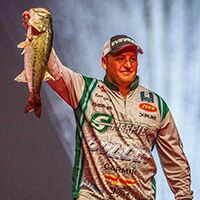
Ramie Colson
Professional bass angler on the FLW Tour. Second place finish in the 2015 FLW Forrest Wood Cup.
1. Limit the gear you bring.
When fishing a small pond or out of a small boat, limit the amount of gear/tackle you bring. This keeps things simple and less cluttered in the boat. I generally have a Texas-rigged Zoom Worm for fishing offshore structure, a War Eagle spinnerbait to target shallow water cover and mid-depth flats.
2. Stealth approach.
When fish get tight lipped, a drop shot with a Zoom finesse worm is my choice. Many times these bass get heavy pressure, so fish slow and be sure to fish the key pieces of cover effectively. Also, the line size you use while fishing in a pond will depend on clarity of water. If the water is off-colored, I use 12-14lb SunLine FC Sniper, but if it’s clear I stay with 8-10lb SunLine FC Sniper.
3. Marine electronics.
As far electronics, look at the Garmin echoMAP CHIRP 53cv as it has traditional CHIRP sonar, and CHIRP scanning sonar, as well as mapping at an affordable price. Another option for small boat fishing in small ponds is the Garmin Striker 4cv.
“Think through your plan for the day's fishing and the species you intend to target”

Randy Ramsay
Founder and president of Jarrett Bay Boatworks, and co-founder of Harker’s Island Sportfishing School.
1. Whether you’re fishing from a large sport fish boat, trailerboat or the shoreline, my number one tip is to be organized and prepared.
Think through your plan for the day’s fishing and the species you intend to target. Make sure you’re equipped with the proper rods and reels that have been serviced and have good line. Check your supply of lures or bait, ensure you have rigging tools, gloves, gaffs or landing nets, and, of course, enough ice and storage to care for any fish you might decide to keep. When targeting billfish or fish that might be released, be sure to have the proper tools to ensure a safe release.
2. Plan for your day.
Make sure you have a plan for where you’ll fish and check local reports for where the fish are most active. Check the weather to make sure the conditions are fishable and safe and that you have made others aware of your plans to leave and when you’ll return.
3. Communicate with others who may be fishing with you.
Make sure each person understands their role in the fishing operation and the group works together as a team. I’m not suggesting that it’s regimented, but when a fish is on, this organization can be the difference in landing a fish and losing one.
“Be aware of the subtle clues around you”
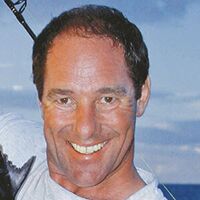
Tim Simpson
Publisher, editor and general manager of Australia’s international gamefishing magazine BlueWater Boats and Sportsfishing.
Sport fishing is quite diverse and to catch lots of a particular species, or type of fish, often requires a targeted approach. Here are a few simple, basic and general tips:
1. Focus on a target.
Fishing for ‘just anything that comes along’ is rarely as productive as choosing a specific target species. This is because each species will have its own particular niche in nature, preferring food, locations and conditions slightly different to other species.
By choosing a specific target you can then refine where you fish, how you fish, what time of day and year you fish, and use a technique and rig that specifically relates to what you want to catch. Then you’ll catch LOTS more of them.
Also be flexible. If you evaluate the conditions on the day and decide it’s just not right for your chosen target, choose another. That way you’ll end up catching fish instead of being frustrated.
2. Be prepared for an exceptional fish.
Lots of anglers are given opportunities to catch a fish of their dreams, but they blow it because they’re not ready for it. Sooner or later, really big fish do come along. Most are lost before the angler even realises what he/she hooked.
However, if you always prepare your tackle with these exceptional fish in mind, when that occasion finally does arrive, you’ll have a really good chance for success. These preparations include details such as making sure your reel is full of fresh line, and having a smooth, reliable and pre-checked drag setting on your reel. Also make sure your knots are really strong, your leader is sufficient, and you have the accessories necessary to land an unexpectedly large fish.
Importantly, have a battle plan and calm disposition to handle the situation when it occurs. You really need to start out expecting and waiting for that special occasion. One day it will come. Be ready!
3. Be aware of the subtle clues around you.
While all may seem calm and quiet, there’ll actually be lots of clues to indicate what’s going on beneath the surface. The way the current is flowing, the way the chop is moving, the colour of the water, the state of the tide, the direction and way birds are moving, the flicker of baitfish or a swirl on the surface all give a hint at where the action is happening, or what action is likely to happen soon.
Think like a fish. Consider what type of prey they eat, where they would search for that food, when they would feel comfortable hunting for food, and how they feed. Put these considerations together with the clues given by the environment at that time and you’ll soon pinpoint the best place and way to target your quarry.
“Declutter and make your boat versatile”
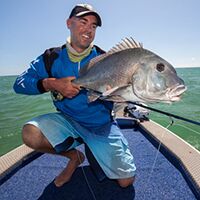
Justin Duggan
Fishing charter guide at Sydney Fly Fishing, photographer, and one of Australia’s leading anglers.
1. Stealth is wealth.
If you want to catch more fish then get to know the ins and outs of what makes your boat quietest on the water. Wave slap and hull noise can be decreased by varying your boats trim, speed or the angle you point into a chop. Choose the quietest motor you can and consider electric motors as essential for many fishing styles.
2. Use the wind or current to move your boat.
When approaching fishing grounds or especially schools of pelagic fish, I often opt to use the wind or current to move my boat into position by approaching upwind or upcurrent and turning off my main motor. I always take the approach with my fishing to try to never alert the fish to my presence, let them feed naturally and unharassed without hearing your boat and motor.
3. Declutter and make your boat versatile.
Do you only fish one method? Then some days you probably aren’t in the game. The more methods you can fish the more you can catch – fly, lure or bait.
By having removable rod holders, fold away bait boards, flush mount and retractable cleats. I’ve made my boat versatile for many methods, including fly fishing. By removing clutter and line snarling obstructions, I can move between lure fishing and fly fishing then set up a live bait without too much problem at all.
Gunwale mounted rod holders, T-tops, anchor cleats, bait boards and mounting cleats can all get in the way when casting, fighting fish or moving around the boat. If these items are permanent fixtures they can really cramp your style.
Ask yourself: “do I really need it?” and if you need it: “can I hide it?”
I’ve lost more fish and opportunities in cluttered boats than boats that create space with lots of storage options and fold away accessories.
“Run up-sea/up-wind in the morning when the wind and seas are the calmest”

Jim Hendricks
Feature fishing writer and editor for Boating, Salt Water Sportsman and Sport Fishing magazines.
1. Run up-sea/up-wind in the morning.
When fishing any distance offshore in a small boat, try to run up-sea/up-wind in the morning when the wind and seas are the calmest. This allows you to run in a more friendly down-sea tack on the way back to port.
2. Fuel efficiency.
To help boost fuel efficiency on any fishing trip, eliminate any onboard gear you won’t need for that day of fishing. The less weight you carry on the boat, the less fuel you will use.
3. Keep check.
Right after launching your boat for a day of fishing, check the bilge compartment for leaks. Don’t wait until you’re a long distance from the dock to perform a bilge check, as you might not make it back to the trailer before the boat swamps.
“Successful anglers learn something new every time they’re on the water”
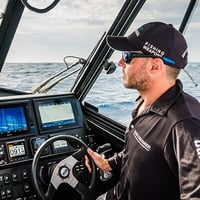
Ben Sandman
Turning a lifelong passion for fishing and boating into a successful career, he’s worked across most of Australia’s fishing/boating media in roles spanning staff journalist to managing editor. Enjoys fishing for everything from trout to marlin.
1. The perfect boat.
Everyone has different ideas on what makes the ‘perfect boat’. At the end of the day, the perfect boat allows you to catch fish and gets you home safely… whether it’s a hard top boat for offshore fishing, a cuddy cabin boat for inshore fishing, or a centre console boat for estuary and freshwater fishing.
What’s most important is to understand your boat – how to launch/retrieve it, how to use its marine electronics, and how to drive your boat in all conditions. Success on the water is as much about your ability to handle your boat, as it is your ability to find and catch fish.
2. Organisation and maintenance.
There’s no such thing as being ‘too organised’. Safety gear, tools, sunscreen and other essential equipment should live in your boat. Plan each fishing trip – decide where you’ll go and what fish you’ll target – and pack all the gear you might need for any situation you could encounter. Ensure everything has its place in your boat, so you know exactly where it is when you need it. Consider the fuel/range of your boat for the trip, and pack plenty of food and drinks for everyone onboard.
There’s also no such thing as looking after your boat ‘too well’. A well-maintained boat results in more fishing time, as you won’t be dealing with issues on the water arising from poor maintenance at home. Cleaning your boat, flushing the engine, and rinsing your fishing gear after each trip is essential to ensure everything is ready to go next time. Service the engine every 100 hours or 12 months, whichever comes first, and remember to maintain the boat trailer too. A boat is an asset. Look after it.
3. Ask, listen, watch, learn.
There are people out there who have forgotten more about fishing than most people will ever know about it. Wade through the egos and puffery to find the genuine people. They’re often the quieter people in the crowd; rather than those who constantly claim how great they are. They’re the ones who’ve done more than most; and who quite possibly invented some of it. They’re the ones who openly share their valuable knowledge; instead of keeping worthless secrets.
Ask questions of people with track records of success, proven over time. Ask questions of your mates. Pay attention to everything going on around you, both above and below the water’s surface. Listen. Watch. Successful anglers learn something new every time they’re on the water – and the world’s most experienced anglers never stop learning…
Bar Crusher Boats extends a HUGE thanks to all the pros and experts who contributed to this mammoth collection of sport and other fishing tips from smaller boats.
If you found some useful tips here to catch more sport fish, including bass, trout, marlin, tuna or other freshwater or saltwater fish species from a trailer or small fishing boat, please share this information with others!
Download FREE Boat Buyer’s Guide




